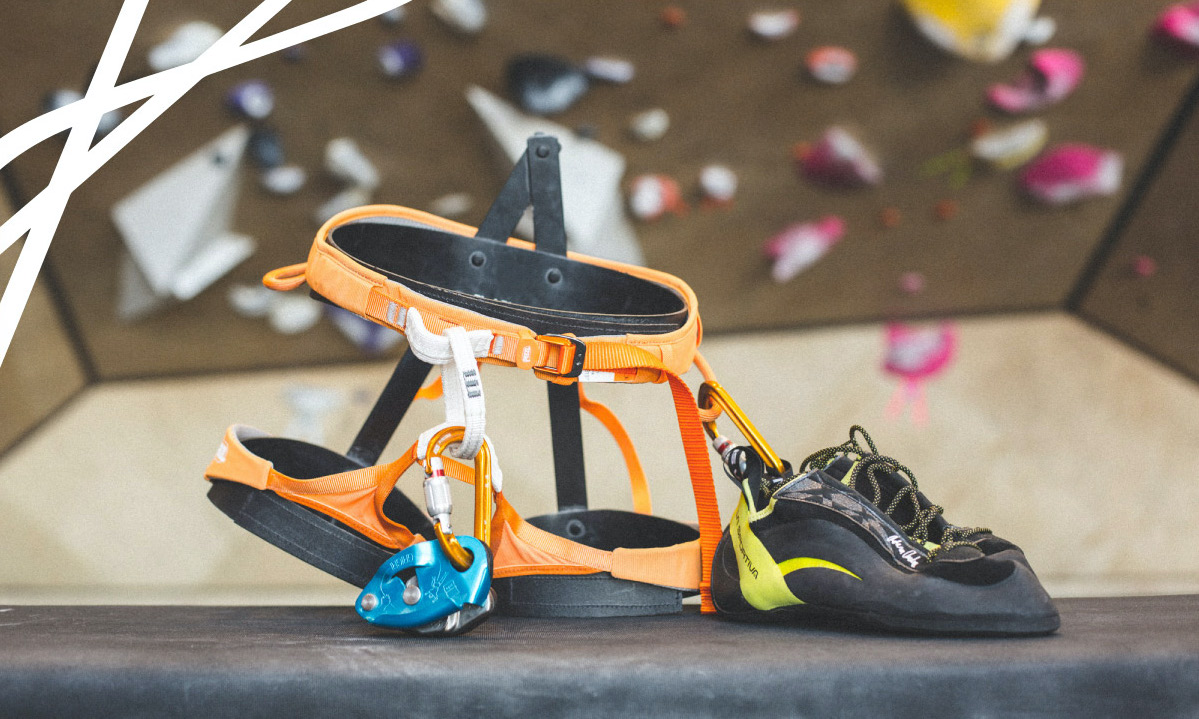
Building and running a gym is already a complicated endeavor, and at first glance it can seem like adding a retail space would complicate it even further without any real benefit. After all, retail requires physical space, time and training on the part of your employees, and the up-front costs of the initial stocking of product. And just like every other part of running a climbing gym, it isn’t without risk.
But the truth is that a successful retail space can be a rewarding choice, and it doesn’t need to be difficult. If you leverage your existing relationships and think creatively about aligning the products you offer with your gym’s identity, selling gear in your gym can be a huge boost to your business, a great benefit for your members, and a compelling way to grow your local gym community.
Your business doesn’t run without income, and expanding into retail means supplementing your income with a new revenue stream. Consider this: The margin you earn on a single item can exceed the value of a month’s membership. Industry data collected and published by the Climbing Wall Association in 2018 suggests that the average climbing gym with a retail shop sees about 6% of its revenue come from retail, which ties with classes as the fourth-largest source of income behind memberships, day passes, and rentals. That’s quite a bit of money to be leaving on the table.
You might be surprised by how easy it is to succeed in retail just with the relationships you’ve already formed! To begin with, your members are already walking through your doors and they already see you as a trusted expert. If they can pick up the gear they need directly from you during one of their sessions, without taking extra time to visit a brick-and-mortar retailer or shop around online, they’ll start to see your shop as the easiest option.
In your position as a gym owner, you’re already at an advantage compared to a general sporting goods retailer. An average retailer might expect about 10% of its clientele to be climbers interested in climbing gear. Your clientele, on the other hand, is composed almost entirely of climbers — many of them might even have an “open tab” on your point-of-sale system to pay for their memberships every month.
If you’ve been partnering with a supplier for your building and routesetting needs that also manufactures climbing gear for individuals, there’s a good chance you can start to offer their products in your retail store with very little hassle or extra work. What’s more, if you have crossover between your routesetters and your retail staff, they’ll already be familiar with the quality and reliability of your partner’s work-at-height equipment, and they will feel more comfortable recommending the climbing-focused products made by the same company.
Your rental fleet is another great tool to leverage. You’re already ordering gear from your rental provider, and your members and guests are already using that gear. For you and your supplier, it can be as simple as submitting a retail purchase through your existing account. For your members, they get the protection of being able to try gear before they spend money on it.

Your gym has a story and an identity. Maybe you set out to build the best bouldering spot in the city, maybe you wanted to give local crushers a place to climb long routes to train for their projects, or maybe you’re building a mentorship program so new climbers can dial in their skills before they head out on the sharp end. Whatever your story, your retail offerings can help you tell it.
For example, your bouldering gym could offer package deals to new boulderers: Buy a crash pad, shoes, and a chalk bag, and get 10% off the whole order plus free chalk. Pair it with a local bouldering guidebook, and your member now has everything she needs to get out and wrestle pebbles — without needing to return shoes to an online retailer because they didn’t fit, and without paying exorbitant shipping on a crash pad. In the mind of your member, you’re now the one-stop shop for local bouldering: a place to train, a community, competitively priced gear, and local beta.
Furthermore, if you offer classes to help your members improve their skill set in the vertical world, you can leverage your educational programs to boost your retail sell-through. A customer purchasing a belay device could get a coupon for a free 30-minute belay lesson focusing on the exact device they bought. Members who participate in clinics could receive a discount on any gear they learned about in the clinic. To help your students transition from the classroom to the crag, you could tailor your classes to exclusively cover gear that you offer in the shop.
As you consider retail, keep in mind that there’s no harm in starting out with just a few core items. Some brands will have minimum order quantities or values that you’ll need to meet, but it shouldn’t be too hard to grow your retail space gradually instead of jumping in headfirst. Think about what your members would value, think about leveraging your relationships and existing offerings, and get in touch with some of your suppliers. You’ll be slinging gear before you know it!